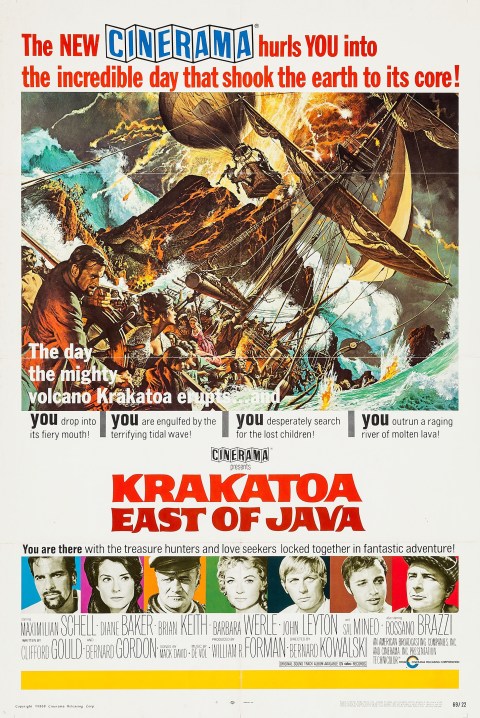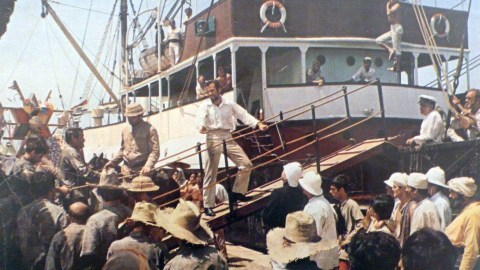17. 4. – 19. 4. 2026
Krakatoa, East of Java

 Original title: Krakatoa, East of Java
Original title: Krakatoa, East of JavaDirector: Bernard L. Kowalski
Production: 1969, USA
Length: 131 min.
Annotation for KRRR! 2012
Between August 26 and 27, 1883, the Krakatoa volcano, located between the islands of Sumatra and Java, erupted. It was the largest volcanic eruption and probably the most powerful eruption in modern human history. It was accompanied, among other things, by ash spewing up to 80 kilometers into the air and tsunamis in places more than 40 meters high. On March 14, 1969, the premiere of the film Krakatoa, East of Java took place in Los Angeles. It was accompanied by a huge marketing campaign that included, among other things, organizing parades, launching hot air balloons and the largest outdoor painted banner in the world, which was almost 80 meters wide and 19 meters high. One of the results of the huge campaign was that the phrase that forms the title of the film entered the public consciousness much more significantly than the film itself. Which added to the infamous notoriety of the film, which managed to make a geographical shoe in its title. Krakatoa is actually located west of Java. The producers were reportedly only made aware of the mistake when the promotion was already underway and it would have been expensive for them to stop it. Another version says that the producers were aware of the mistake, but the word east simply sounded more exotic.
This film was the beginning of a short career in big-budget film production for veteran television director Bernard L. Kowalski. He had worked on countless TV series, for example, directing the pilot for Mission: Impossible, several episodes of Columbo, and producing Jake and the Fat Man. However, his only work for the cinema at that time was four cheap B-movies that Roger and Gene Corman had produced a decade earlier. The presence of a mostly television director on such a large production could perhaps be explained by the fact that the film was produced in cooperation with the television company ABC. It was also the last film to be released in the US in the Cinerama format. Some of the production materials and the opening credits of the film thematize this format by dividing the image into three parts, thus referring to the classic Cinerama technique, where only the simultaneous projection of three separate film strips creates the entire widescreen image. Paradoxically, by that time Cinerama had long since abandoned the three-strip method for cost-effective reasons and films for this format were shot on regular 70mm film.
The film Krakatoa, East of Java can be considered a kind of connecting link between the epic historical blockbusters, for which widescreen formats began to be created in the 1950s, such as the already retired Cinerama in the 1960s, and the cycle of disaster films of the 1970s, which began with 1970's Airport. On the one hand, Krakatoa celebrates the faded glory of the colonial past and, on the other hand, suppresses its periodization at the expense of the relationships between the characters and the destructive spectacle. After the great success of the disaster series, the film was re-released in 1975 under the geographically non-offensive title Volcano.
The filmmakers developed a fictional story around the historical disaster about a captain who, together with a group of other treasure hunters, sets out to search for valuable pearls hidden on a sunken ship. However, he is forced by the authorities to transport a group of convicts to an island prison. However, some of the people on board have their own secrets and hidden motives. The plot and characters of the film came under heavy fire from critics, but more important than historical and psychological credibility was to raise expectations before the final, Academy Award-nominated, stunt scenes of excessive destruction. And these are the reasons why this film is worth seeing in 70mm format.